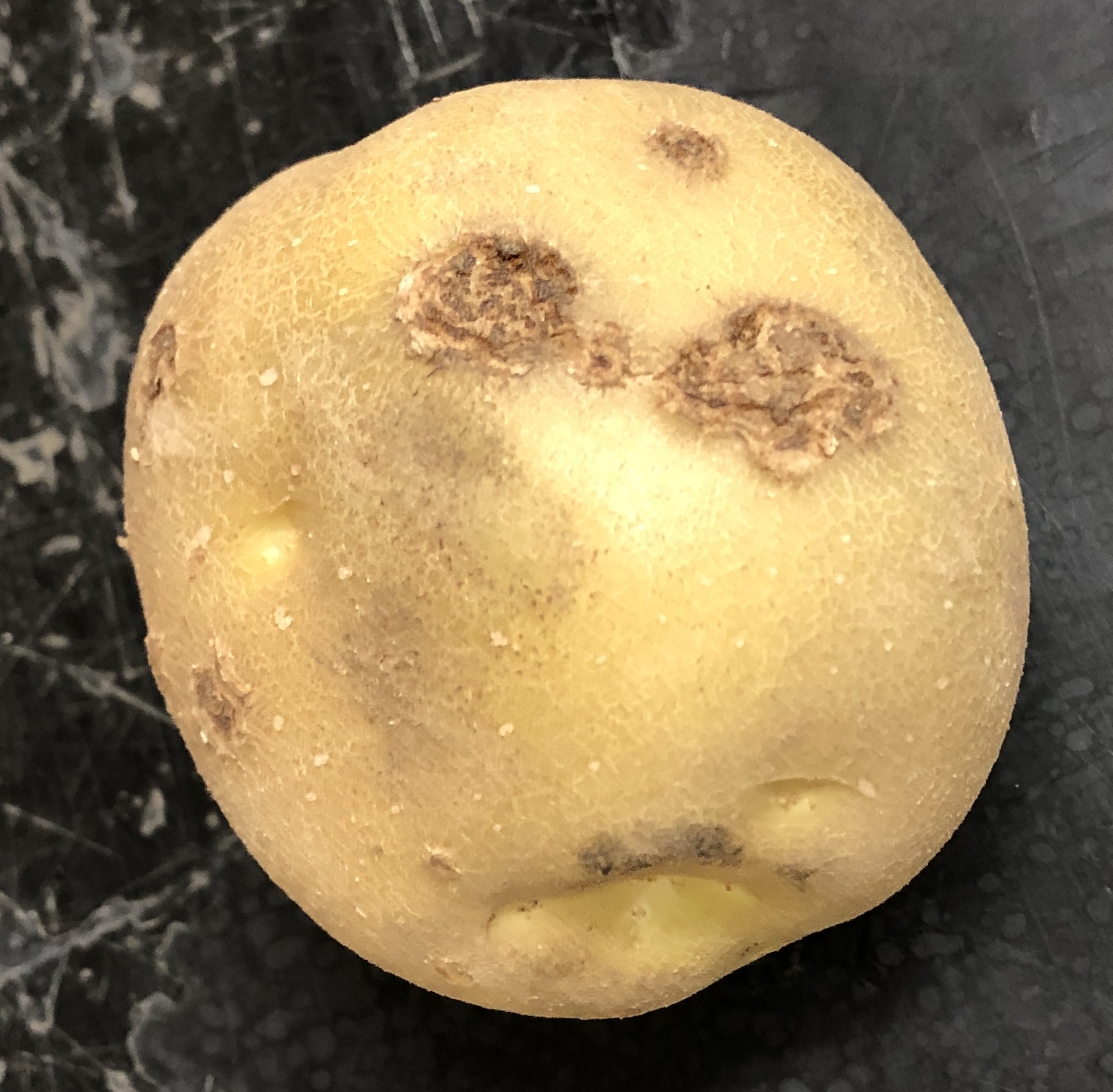|
Streptomyces Hayashii
''Streptomyces hayashii'' is a species of aerobic Gram-positive actinomycete. It was recently discovered and characterized in Brazil, along with ''Streptomyces hilarionis'', where it has been associated with common scab Common scab is a plant disease of root and tuber crops caused by a small number of ''Streptomyces'' species, specifically ''Streptomyces scabies, S. scabies'', ''Streptomyces acidiscabies, S. acidiscabies'', ''Streptomyces turgidiscabie ..., a disease that causes significant damage to potato crops worldwide. The type strain is IBSBF 2953T(other culture collections: CBMAI 2675T=ICMP 24301T=MUM 22.68T). References Streptomyces Bacteria described in 2021 {{Streptomyces-stub ... [...More Info...] [...Related Items...] OR: [Wikipedia] [Google] [Baidu] |
Common Scab
Common scab is a plant disease of root and tuber crops caused by a small number of ''Streptomyces'' species, specifically ''Streptomyces scabies, S. scabies'', ''Streptomyces acidiscabies, S. acidiscabies'', ''Streptomyces turgidiscabies, S. turgidiscabies'' and others. Common scab mainly affects potato (''Solanum tuberosum''), but can also cause disease on radish (''Raphanus sativus''), parsnip (''Pastinaca sativa''), beet (''Beta vulgaris''), and carrot (''Daucus carota''). This plant disease is found wherever these vegetables are grown. Common scab symptoms are variable and can range from surface russeting to deep pits in root and tuber vegetables. This disease does not usually affect yields, but it can greatly reduce quality of the harvested vegetables and make them unsuitable for sale. Root and tuber vegetables are susceptible to infection by ''Streptomyces'' species as soon as the root or tuber forms, but, because this disease only affects root and tubers, th ... [...More Info...] [...Related Items...] OR: [Wikipedia] [Google] [Baidu] |
Streptomyces
''Streptomyces'', from στρεπτός (''streptós''), meaning "twisted", and μύκης (''múkés''), meaning "fungus", is the largest genus of Actinomycetota, and the type genus of the family Streptomycetaceae. Over 700 species of ''Streptomyces'' bacteria have been described. As with the other Actinomycetota, streptomycetes are gram-positive, and have very large genomes with high GC content. Found predominantly in soil and decaying vegetation, most streptomycetes produce spores, and are noted for their distinct "earthy" odor that results from production of a volatile metabolite, geosmin. Different strains of the same species may colonize very diverse environments. Streptomycetes are characterised by a complex secondary metabolism. Between 5-23% (average: 12%) of the protein-coding genes of each ''Streptomyces'' species are implicated in secondary metabolism. Streptomycetes produce over two-thirds of the clinically useful antibiotics of natural origin (e.g., neomy ... [...More Info...] [...Related Items...] OR: [Wikipedia] [Google] [Baidu] |

